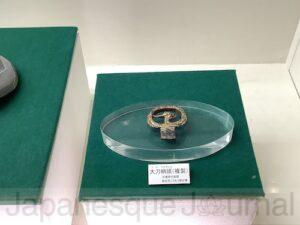Introduction:
Have you ever heard of corridor-style burial stone chambers? These were the tombs of influential people in ancient Japan that were constructed during the 6th to 7th centuries using a burial technique introduced from Korea. The Ancient Kibi Cultural Properties Center, located on the mountainside of Okayama Prefecture in Japan, is currently hosting an exhibition titled “The World of Corridor-Style Burial Stone Chambers,” showcasing these fascinating tombs.

The Ancient Kibi Cultural Properties Center
The Ancient Kibi Cultural Properties Center (岡山県古代吉備文化財センター) is situated along a mountain path in Okayama Prefecture. The region was formerly known as “Kibi (吉備).” In ancient times, Kibi was one of the significant strategic points in Japan, along with Yamato and Izumo. Thus it is home to numerous ruins. The center is dedicated to researching and preserving the artifacts excavated from these ruins and displays the findings as exhibitions.
Although there is no English explanation, English brochures are available at the center. Additionally, visitors can scan the QR code at the exhibition room’s permanent display section to access the English description. The page is available at this link(https://www.pref.okayama.jp/site/kodai/649793.html) which is worth reading as it contains valuable information about old Kobi region.

What is the Corridor-Style Burial Stone Chambers?
Ancient Japanese local Kings used big tombs, known as “kofun (古墳)” or “burial mounds,” which can be as large as 486 meters (1600 feet). In the early stages of kofun era, during the 3rd and 4th centuries, they dug a large hole into the mound to create a chamber. Inside this chamber, They placed a coffin and covered the chamber with a lid made of clay or ceiling stones. This was called a vertical shaft burial stone chamber (Tateana Shiki Sekishitsu; 竪穴式石室), but it had limitations. Once the chamber was sealed, it was very difficult to reopen it later. So usually they bury only one person per mound. This meant that multiple mounds had to be created for different generations of Kings, making kofun construction a daunting task.
Enter the corridor-style burial stone chamber (Yokoana Shiki Sekisitsu; 横穴式石室). This burial method originated in China during the Han dynasty, and spread to Korea. It was used in the northern Goguryeo kingdom before making its way to the southern Baekje and Gaya regions, and finally arriving in Japan in the 5th century. By the 6th and 7th centuries, it became the most popular type of burial chamber in Japan.
The corridor-style burial stone chamber is built by digging a horizontal passage into the mound, creating a corridor that leads to a chamber where the coffin is placed. This design makes it easy to add more coffins in the future, making it possible to bury multiple generations of Kings within the same mound. This design made it easier and less costly for both the Kings and the common people.
Exhibition “World of Corridor-Style Burial Stone Chambers”
Recently, The Ancient Kibi Cultural Properties Center in Okayama, Japan, held an exhibition titled “Exploring the World of Corridor-Style Burial Stone Chambers” as part of the public unveiling of the excavation of the “Komorizuka kofun (こうもり塚古墳),” the largest corridor-style burial stone chamber in Okayama. The exhibition “World of Corridor-Style Burial Stone Chambers (横穴式石室の世界)” has a limited space.

Summarizing the Exhibition’s main points:
-The oldest Corridor-Style Burial Stone Chambers in the Kibi region was built in the mid-5th century. It is located in the stone chamber of the Senzoku kofun (千足古墳) in Okayama City.
-From the mid-6th century onwards, Corridor-Style Burial Stone Chambers began to be adopted in the tombs of powerful people. The Komorizuka kofun is one of them. You can visit Komorizuka kofun on YouTube:https://youtu.be/OUi0HV6QBms.
-The coffin of the Komorizuka kofun is a pottery coffin with a decoration resembling a wave-like and linear pattern. It similar to Haniwa (埴輪; Terracotta figurine). This survey revealed that the coffin was larger than previously thought.

-This survey of the Komorizuka kofun revealed that it is a 97 meters long keyhole-shaped tomb. It was not covered with Haniwa or roof tiles.
-The hilt of the unearthed sword is the main photo on the exhibition poster. I guess it must be centerpiece of the exhibition.

As the text became too long, I will cover the permanent exhibition section in the next post.
Conclusion
In conclusion, visiting The Ancient Kibi Cultural Properties Center’s exhibition is an informative and exciting experience. Not only does it shed light on the history of kofun construction, but it also provides insight into the lives of ancient Japanese elites. If you are interested in Japanese history or archaeology, I recommend you to see this exhibition.